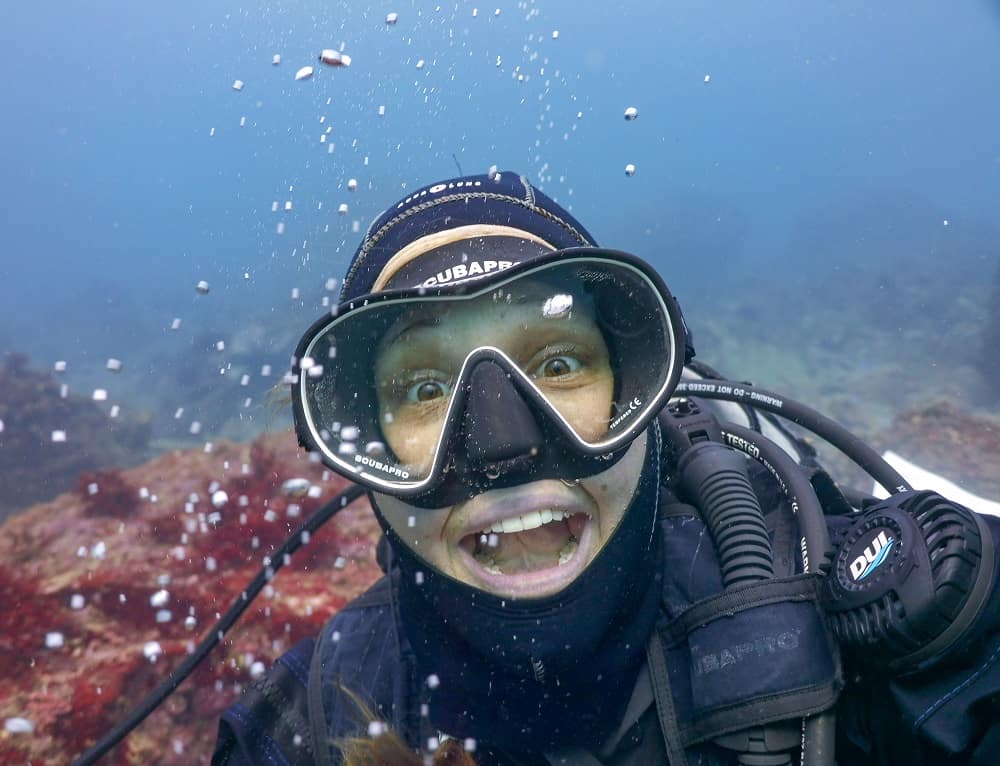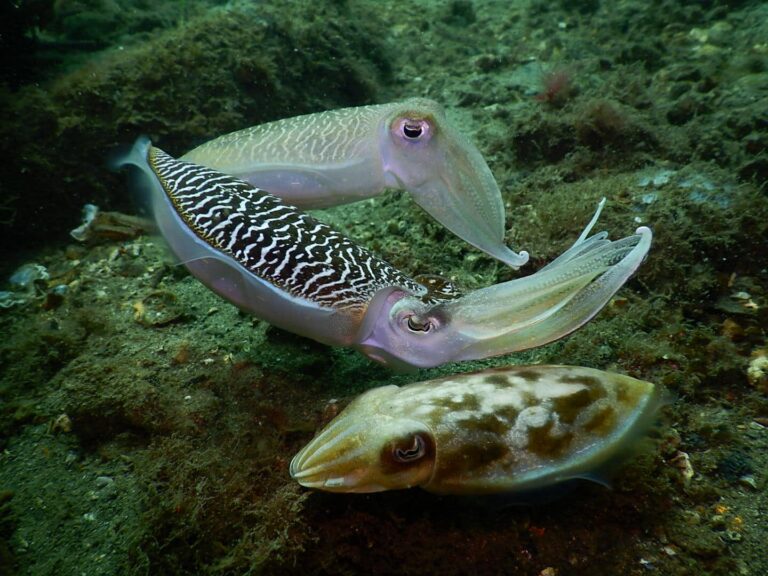Dumbfounding Flapjack Octopus Facts You NEED To Know!
What looks like a Pokémon character, has little wing-like ear flaps (the fins), lives in chilly waters, and is SUPER CUTE? The Flapjack Octopus! I mean, how could you not completely fall in love with this round, gelatinous, stubby-armed octopus!? Let’s take a swim and learn more astounding Flapjack octopus facts.

Those big Bambi-like eyes looking at you with curiosity and those adorable fin flaps on the side of their mantle has the whole world collectively sighing, “Awwww”. The Flapjack Octopus is described as so cute that the scientists initially wanted to name it this octopus” Adorabilis”.
Keep reading as we delve into how this irresistibly adorable octopus has perfectly adapted to their deep-sea habitat!
Meet the Flapjack Octopus!
Let’s start with where this octopus fits into the octo-verse!
Suborder: Cirrata
Big picture, the Flapjack Octopus falls into the larger suborder cirrata, which includes octopuses with a single row of suckers on each arm, and each sucker has hair-like projections on it called cirri.
Family: Umbrella Octopus
From there, they belong to Umbrella Octopus (Opisthoteuthidae) family, which includes the equally endearing Dumbo Octopuses (genus Grimpoteuthis).
All Umbrella Octopuses have webbed bodies that look like blobby umbrellas opening and closing as they glide through the water in a similar fashion to that of a jellyfish.
They also have those signature fin flaps on the side of their mantle. The entire Umbrella Octopus family goes for maximum deep-sea cuteness.
Genus: Flapjack Octopus
Narrowing it down even further, we get to the Flapjack Octopus, which refers to the genus of octopus that includes 24 species (that we know of!)!
Flapjack Octopuses have been observed spread out on the seafloor, looking like a pancake, and that is how they got their name! While this could be the ultimate relaxed pose, the Flapjack Octopus compresses itself into the seafloor to seem less threatening to potential prey.
I mean, who is scared of a pancake??
Flapjack Octopuses are small octopuses ranging in hues of:
- Red
- Pink
- Orange
- Yellow.
Their mantle is roughly as long as a dinner knife (7 inches, 20 cm), and they weigh around 1 ounce (25-30 grams) or as heavy as a slice of bread!
They stay near the seafloor, at depths of 430-7,710 feet (130-2,350 meters), where temperatures hover around 34 – 39°F (1 – 4°C). That’s over a mile below the ocean’s surface!
They scuttle along, looking for prey like tiny worms, crustaceans, and other invertebrates, making their home in these depths.
Most Flapjack Octopus sightings have come from the coasts of Japan and California; however, they are thought to inhabit deep waters worldwide. Since Flapjacks live in an environment that isn’t easily accessible to us humans, their exact lifespan is unknown, but it’s estimated to be between 1.4-2.6 years.
The best Flapjack Octopus facts
Now that you have a bit of info on the Flapjack species, here are a few fun facts you should know about the Flapjack Octopus…
They are always wearing an invisibility cloak!
Unlike most octopuses, the Flapjack can’t change colors because they lack chromatophores – those incredible cells that let octopuses change color instantly, allowing them to blend into their surroundings and avoid predation.
How do our little flapjacks stay safe? They have their own brand of camouflage perfectly suited to the darkness: not being visible at all!
It was mentioned that the Flapjack can be hues of red, pink, orange, and yellow. Cue invisibility cloak! This nifty magic trick has to do with color wavelengths and how they are filtered through the water.
As sunlight hits the water, the first light to be filtered out in the water as shallow as 5 feet (1.5 meters) is red light! This is followed by orange, yellow, green, and eventually, the only light you are left with is blue.
Because red light doesn’t get very far into the ocean, many animals can’t see the color red. This makes any red- or orange-colored animals appear black to predators, effectively blending into the dark waters like they were never even there.
The perfect disguise!
They have a shell (kind of)
Octopuses don’t have bones. However, since they fall within the Mollusca phylum, they are related to many species with hard shells. Along the evolutionary track, octopuses opted out of carrying around shells to hide in and instead developed smarts and amazing camouflage techniques to be able to live as the squishy, naked beings we know and love today.
But wait…
The Flapjack Octopus has the remnants of a shell. Can you see it? Nope. Because it’s an internal shell shaped like a “U” or saddle that helps support the flappy fins on each side of their perfect little mantle (head).
They are always pregnant (in a sense)
Once a female Flapjack Octopus reaches sexual maturity and finds her first mate, she can store the male’s sperm until she is ready to lay eggs. A female can go on to mate multiple times, providing her with the option of saving sperm or fertilizing her eggs.
Females can carry multiple large eggs, between 200-500, in various stages of development, which means the female Flapjack Octopus can get pregnant while being pregnant!
Females will lay late-stage eggs under rocks, not brooding or protecting them, going against standard octopus mom practices. Her eggs could then take well over a year until they hatch.
Can you even imagine the adorableness of a baby Flapjack!?!
Many deep-sea octopuses exhibit crazy sexual dimorphisms, where males and females are significantly different in appearance. Like our fabulous Blanket Octopus (Tremoctopus violaceus) duo, where the female has an iridescent, flowing cape and can reach up to 2 meters (6 ft) in length versus the male, who is the size of a walnut and uses jellyfish tentacles as num-chucks.
🐙 Octopus Fun Fact
The underwater world is WILD y’all.
Apparently, the Flapjack Octopus decided it had plenty of quirks, so the biggest difference between sexes is that males are only slightly larger than females. Sexual dimorphism is minimal amongst the flapjack boys and girls of this world.
A famous flapjack!
Where are my Finding Nemo fans at? Remember cutie pie “Pearl”? She’s a Flapjack Octopus who Pixar represented in all the wrong ways. If you have read this far, you can probably already guess what they got wrong.
The most obvious one is that Pearl does not belong on the shallow reefs of Australia and rather in the deep sea of the Pacific Ocean. Imagine poor little pink Pearl on a sunlit reef with no way to camouflage! Eek!
Pixar’s biggest goof might be her famous line, “Awww, you guys made me ink,” because that wouldn’t be possible. Flapjack Octopuses don’t have a functioning ink sac since they really have no use for a defense tool that would blend right into the dark environment they call home.

What’s your favorite of the Flapjack Octopus facts?
Let us know in the comments!
If you want to educate yourself some more about all sorts of different cephalopods, take a look at our encyclopedia. Or, what we call it, our Octopedia!
Connect with other octopus lovers via the OctoNation Facebook group, OctopusFanClub.com! Make sure to follow us on Facebook and Instagram to keep up to date with the conservation, education, and ongoing research of cephalopods.
✨Click here to Adopt an Octopus!✨
More posts to read:
- Top 5 Smallest, Teeniest, Tiniest Octopus Species!
- Giant Australian Cuttlefish Facts That Will Make You Go WHOA!
- Vampire Squid Facts: Ancestors Of The Jurassic Seas!
- 7 Jaw-Dropping Caribbean Reef Octopus Facts
- Cuttlefish Quidditch: Learn About Cuttlefish Migration!

Corinne is a biologist with 10 years of experience in the fields of marine and wildlife biology. She has a Master’s degree in marine science from the University of Auckland and throughout her career has worked on multiple international marine conservation projects as an environmental consultant. She is an avid scuba diver, underwater photographer, and loves to share random facts about sea creatures with anyone who will listen. Based in Japan, Corinne currently works in medical research and scientific freelance writing!








